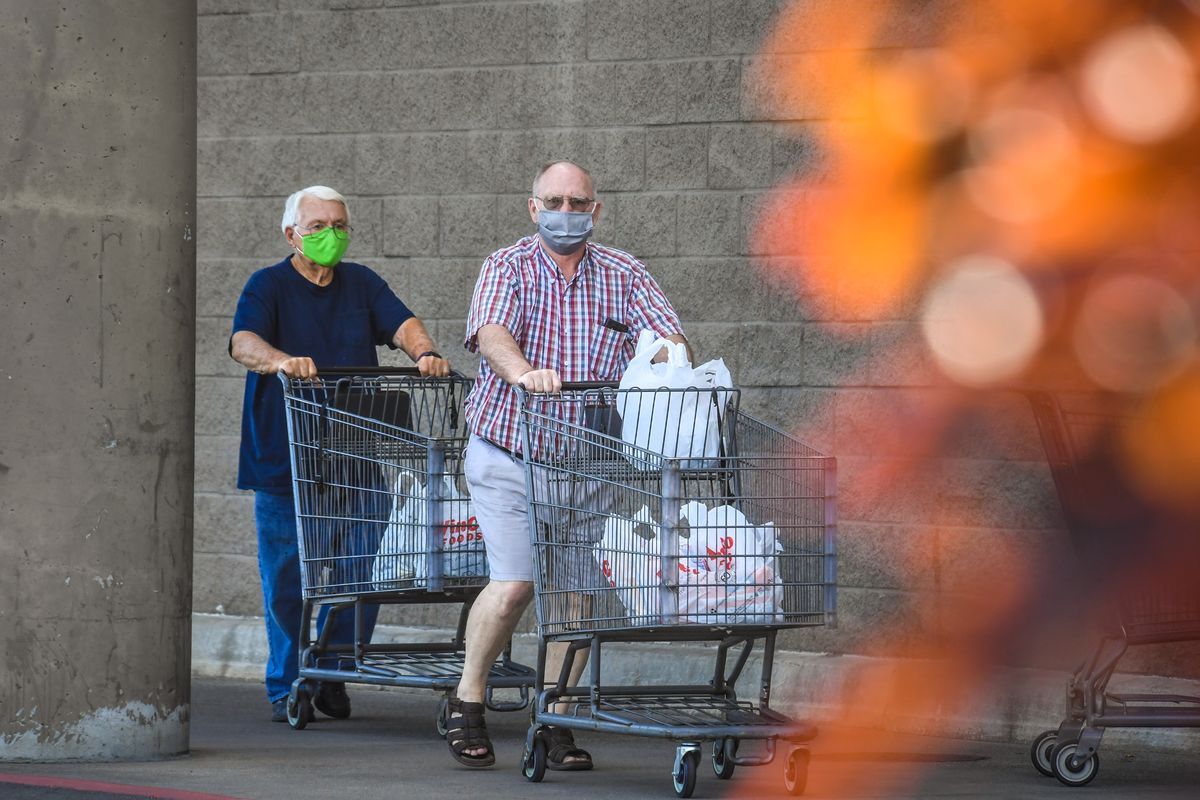Face coverings are making a ‘difference’ in COVID-19 activity in Spokane County

Wearing masks is working.
The number of people infected with the coronavirus is falling. So are hospitalizations and even deaths in Spokane and across most of Washington.
“The masking has made a difference,” Spokane County Health Officer Dr. Bob Lutz told reporters this week.
On Thursday, the Spokane Regional Health District confirmed 44 new cases of COVID-19.
The county’s most recent seven-day rolling average is 32 cases per day. This number has dropped by more than half compared with a month ago when the county averaged 84 cases per day.
Along with those raw numbers, the closely watched incidence rate for the virus continues to drop, too, which is due to behavior changes, Lutz said. Chief among them is adherence to the state’s mask mandate requiring businesses to insist customers wear masks when shopping at stores or visiting offices.
The incidence rate in Spokane County has dropped from its peak of 229 cases per 100,000 residents to 102 cases per 100,000 residents. The rate is key for one of the most pressing issues of the pandemic: reopening schools.
To get to a point where schools might be able to bring students back to classrooms, state health officials want to see incidence rates at between 25 to 75 cases per 100,000 residents.
“People need to continue to do the hard work because it’s only by that collective effort we’ll be able to get to the next level,” Lutz said. “We’ve nosedived, but that last little bit is often the hardest to reach. It will be a lot harder over the next couple weeks and months.”

State Secretary of Health Dr. John Wiesman pointed to counties such as Yakima, which has significantly driven down the rate of infections with social distancing, wearing masks and good contact tracing.
“It’s my belief that everyone can get down to the numbers we want to see if we take this approach comprehensibly and folks have the resources,” Wiesman said.
He put a statewide mask mandate in place on June 24. A month later case counts and hospitalizations in Spokane County were peaking. On July 25, Wiesman clarified and made his mask mandate more strict, including common areas in apartment buildings and any space outside one’s personal home that cannot accommodate 6 feet of space between people.
State health officials say that they are seeing good compliance with the face covering requirements in businesses and in public places, but private gatherings continue to be a toss-up for masking and distancing, as well as adhering to gathering limits.
“We just want to remind people that in our personal lives, we need to be taking the same kind of precautions,” Wiesman said.
Health officials remain concerned about the upcoming Labor Day weekend.
“Every holiday we’ve seen significant spikes,” Lutz said.
He also said there are indications that community spread has slowed.
Hospitalizations statewide and in Spokane have continued to decline compared with peaks earlier this summer. There are 33 patients receiving treatment for COVID-19 in Spokane hospitals; 25 of them are county residents.
COVID-19 appears to be on the decline in North Idaho as well. The Panhandle Health District has seen a significant drop in the number of active cases they are monitoring. COVID-19 activity appeared to peak in the five-county region in late July and early August.
The Panhandle Board of Health instituted a mask mandate in Kootenai County, where the heaviest concentration of cases are and were, on July 23. More than a month later, cases are on the decline.
The district confirmed 23 new cases on Thursday.
Those positive trends – with the exception of soaring numbers in Pullman as students returned to off-campus housing at WSU – bode well for the region.
“We’re headed in the right direction, and how optimistic we can be depends on each of us as individuals,” Wiesman said.